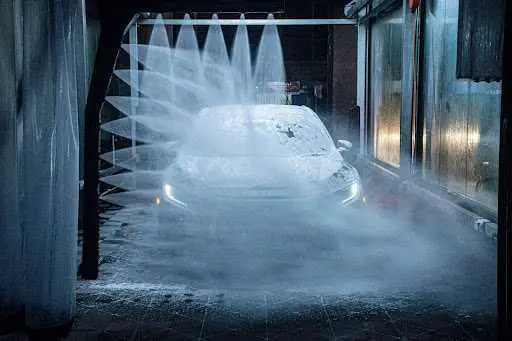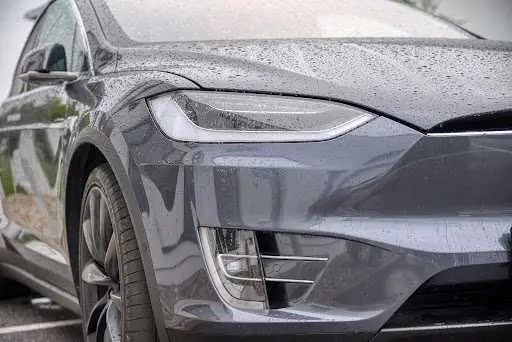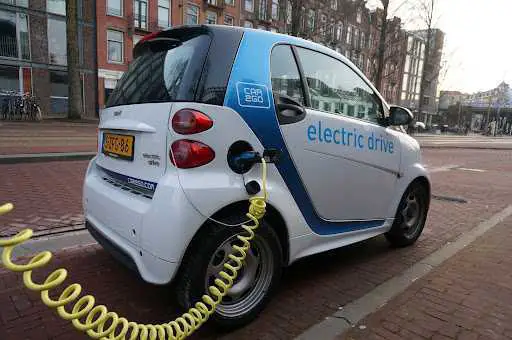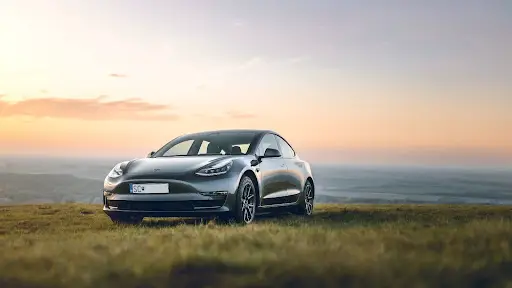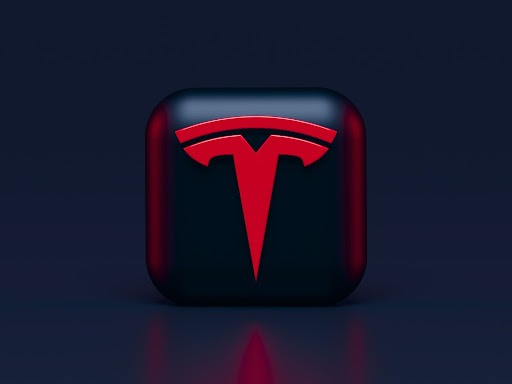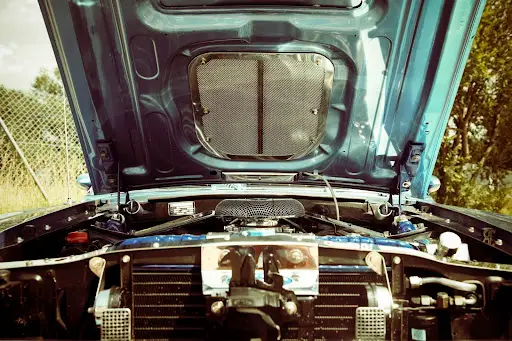Can an Electric Car Go Through a Car Wash?
Electric cars are the future for both the earth and humans, promising clean air for us and future generations and offering lots of helpful features. However, they’re still far from being perfect, and their buyers face different challenges every day. One of these challenges is if they can take their electric car to a car wash.
An electric car can go through a car wash safely. Electric cars’ batteries and their electrical equipment are sealed against water infusion. While manufacturers advise only to use touchless car washes, you can go through regular automatic car washes. However, they may damage the painting.
If you have an electric car or are thinking about buying one but are concerned about water and electricity mixing, this article can help you. We’ll go through electric cars and their relationship with automatic car washes, then answer some common questions about them – which may be your questions too.
Electric Cars and Car Wash
Water and washing can potentially damage cars in certain situations. Let’s see how they affect EVs.
It’s Safe for the Motor and Battery
Unlike the traditional car, electric cars are sealed properly against water infusion, and their designers have ensured you can charge them up in any weather – whether it’s in the rain or snow.
Electric cars have to undergo difficult weather tests before entering the market. One of them is the soak tests– a procedure in which cars are tested against different flood levels to check for potential leakage or damages.
As a result, you can be sure that no water can get into your electric system components like its motor, battery, or other electrical parts. You can always safely take your electric car to an automatic car wash like rollovers, jet wash systems, or tunnels.
It’s Not So Safe for the Paint
The only concern that makes manufacturers caution you against automatic car washes is the potential cosmetic damages they can entail. For example, in its owner’s manuals, Tesla asks you to stay away from automatic car washes as much as possible, especially from the regular ones.
It also asks you to use only touchless car washes that don’t have giant brushes and contact the car’s body. That’s because such car washes clean hundreds of cars during the day and debris gets stuck inside their brushes and bristles, leading to scratches on the vehicle.
Besides, according to Tesla, washing your electric car in regular automatic car washes can lead to loss of its shine and even fading color.
However, suppose your electric car isn’t a brand new one, or it’s a more affordable model that you don’t care much about potential discoloration or scratches on its body. In that case, you can go through automatic car washes.
How to Prepare an Electric Car for Car Wash
If you’ve decided to go through an automatic car wash, you should consider some tips and take caution. Let’s see what they are.
Jet Wash Areas and Rollovers
If you want to wash your electric car in a rollover or jet wash area, switching off your engine is recommended, but emergency brakes should be engaged. You should also make sure all protruding parts of your car, like its antenna, wipers, and side-view mirrors, are removed or folded. Make sure no door or window is open, and check out the sunroof’s position.
During the jet wash procedure, make sure it’s appropriately rinsed and there’s no cleaning product spot on the car surface to dry. Such spots can make your car lose its shine and dull its color. Don’t use wash guns with too strong water pressure and keep a distance of at least 1 foot (30cm).
Car Wash Tunnels
To use car wash tunnels to clean your electric car, you should leave its ignition on and put it in neutral. The wheels won’t get locked and can freely move when you put the car in the neutral position (“N”). You should also disable the emergency brakes so that your car can be dragged smoothly through the tunnel.
It’s also recommended to disable all automatic functions like windscreen wipers, folding side-view mirrors, closing the sunroof, removing the antenna, and checking all doors and windows to ensure they’re properly closed.
Moreover, make sure your electric car has enough battery charge before entering the tunnel so its motor can be used while washing.
Some Helpful Tips
- Try to choose a car wash experienced in washing electric cars. While washing EVs is not much different than washing a regular car, an experienced car wash knows how to treat such cars and be cautious with their cosmetics.
- Remember to check car washes online and read their customer reviews. It’s always good to use other people’s experiences and learn more about the pros and cons of a place.
- And don’t forget to check out the products they use for cleaning your electric car. Some car washes use strong detergents containing harsh ingredients that can damage your car’s paint or trims. Make sure they’re not very alkaline or acidic.
Best Way to Wash an Electric Car
While using a car wash is time-saving and convenient, it’s not a recommended method for electric cars. Car washes use big brushes that may scratch your car. Besides, the detergents they use are usually too harsh and strong.
So, if you don’t want to damage your car paint and have enough time, the best method for washing your EV is hand wash.
To do so, first, wash your car with a garden hose to remove dust and soften the grimes. Then use the two-bucket method for washing your car. Fill up a bucket with water and car soap or shampoo solution and another one with plain water.
Dip your wash mitt in the soap solution, wipe a section of your car, and then rinse it off in the water bucket. Repeat this process for the whole car, and then rewash it with your garden hose. As a final touch, you can wax your car to give it shine and protection.
What Happens If an Electric Car Gets Wet?
Electric car owners or those who want to buy one are concerned about getting electroshocked when it gets wet – whether it’s in the rain, flood, or even car wash. But is this concern valid, and what really happens when an electric car gets wet?
Nothing happens if an electric car gets wet. They usually undergo weather tests and are designed to prevent water from getting inside their electrical systems. Their batteries and high-voltage cables are efficiently sealed, and circuit breakers automatically disconnect the power flow when submerged.
As mentioned before, electric cars go through a variety of tests, and no car maker produces a vehicle that can endanger its customers. They’ve built safety features into their cars to ensure the safety of users in emergencies and different climate conditions.
Electric cars are equipped with large and powerful battery packs that empower their electric motors. They produce voltages much higher than regular cars – between 200- 300 volts compared to 12 volts in combustion cars. Directly touching such circuits can be lethal for sure.
Safety Measures to Avoid Electrical Issues
However, it doesn’t mean that EVs are more dangerous than regular cars. Their batteries are mounted somewhere unlikely to get splashed by water. Most of them are also equipped with circuit breakers that automatically switch off the power and isolate the batteries once detecting a collision or short circuit.
If water gets into the car’s electrical system in any way, the circuit breakers trip and disconnect the power flow. The simple act of shutting down an electric car disconnects the power flow, and there would be no power left in high voltage cables.
Most manufacturers color those high voltage cables in bright orange to be visually noticeable and avoided.
What’s more, the EV battery packs manufactured in the US are encased inside a sealed metal shell to protect them from electricity flow from batteries – it’s usually covered with an interior panel or in a carpet.
Even if water actually gets inside the shell, there would be nothing to worry about. The cells of nickel-metal hydride batteries used in most current EVs are maintenance-free and sealed so that nothing can get inside or out of them. Besides, the chemicals inside them are in gel form not to spill in case batteries rupture.
As you see, in normal conditions, it’s pretty unlikely (if not impossible) for water to get inside batteries and contact them. Even the high voltage cables are insulated and protected. So, don’t worry about water getting inside your car’s electrical system while car washing.
Conclusion
Electric cars are not much different than regular combustion cars in terms of cleaning and maintenance. Even better, since electric cars don’t need airflow to burn fuel, they can be completely sealed.
You can take them to the automatic car wash and be sure that no water gets inside of their electrical system or batteries. However, touchless car washes are a better choice to avoid scratching. And make sure the used detergents aren’t harmful to your car’s paint.
Amazon and the Amazon logo are trademarks of Amazon.com, Inc, or its affiliates.

